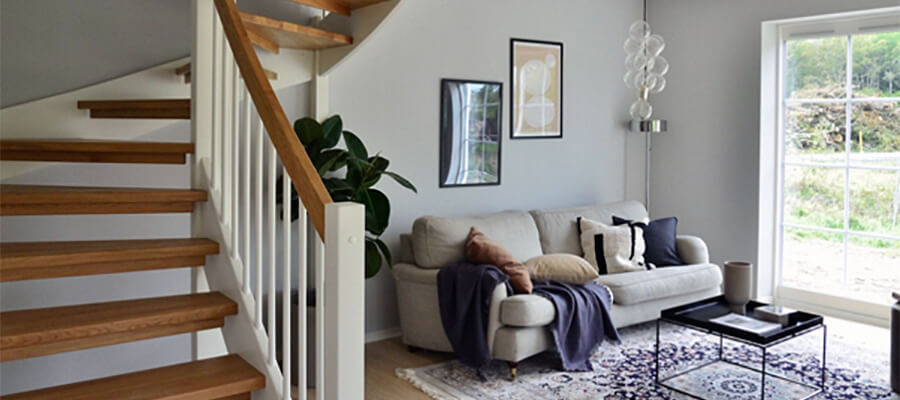5 Essential Skills You Need
as an Interior Designer
See also: Creative Thinking
If you’ve got a creative mindset, a passion for interiors and decor, plus great spatial awareness, then becoming an interior designer could be a good career choice for you.
While there are a lot of interior design courses out there that can teach you the specifics of designing and putting together a space or a room, there are a few key skills that you can work on now.
This article covers five essential skills that you need to be a successful interior designer.

Creativity and attention to detail
Creativity is one of the most important skills for an interior designer. You need to be up to date with the latest trends and popular styles, understand how different spaces can be used, but also be able to come up with exciting and innovative ideas. It’s essential that you can take on board your client’s requirements but also get creative and come up with a design that exceeds their expectations.
You also need to have a good idea for detail and understand colours, textures, and how to add finishing touches that can bring the space together. You should have a good general knowledge of popular interior styles such as:
- Modern
- Contemporary
- Minimalist
- Industrial
- Mid-century Modern
- Scandinavian
- Traditional
Follow relevant industry publications and blogs, and get to know some of the common products and materials that you’ll be working with. Get to know different furniture styles and materials, understand types of paint and finishes, know when to use wallpaper and where to find quality wallpaper to make a feature wall, or how to put together a gallery wall.
You need to be full of ideas, have the knowledge to put your plans together and present them effectively to your clients.
Excellent communication skills
A big part of being an interior designer is communicating with clients, contractors, and suppliers.
When you meet and talk with clients, you’ll need to be able to discuss their ideas, pay close attention to what they say, and understand their requirements. Initially, communicating well is going to be essential to securing clients and convincing them that you can do a great job.
Once you’ve agreed to work with a client then you need to be able to effectively communicate throughout the process so that you deliver a finished project that they’re happy with. You need to make sure that they’re aware and onboard with the initial plans and any changes that have to be made as the project progresses.
You’ll also need to communicate effectively with any other contractors that you bring in to help you complete the project and suppliers who are providing elements such as furniture or artwork.
While most of the communication is likely to happen in person or over the phone, you’ll also need to be sending emails and written communications as well. It’s important to keep an accurate record of your conversations, and summarising what you’ve discussed and sending it over to a client is a good way to ensure you’re both on the same page and no mistakes are made.
Budgeting and numeracy
When you’re working on an interior design project you’re going to have to stick to a clear budget, which means you need to be comfortable working with numbers. You’ll need to be able to understand exactly how much each element of your plan will cost, from materials and labour, to the cost of any delays in the work.
It’s important that you note down every cost, and timings, as well as keeping receipts and invoices so that you can accurately bill your clients.
You will also need to be confident when negotiating with suppliers to get a better deal. In addition, it is useful to have a good idea of which supplies and materials are in high demand so that you can buy them in bulk where possible to save money and time.
Organisational skills
As an interior designer, you need to be highly organised to ensure that you complete your projects on time and within budget. You’ll need to coordinate with suppliers and contractors to ensure that they’re working to your schedule and any issues or problems are resolved quickly. This means keeping your records up to date, responding to emails and phone calls, and keeping your client in the loop about how things are going.
It’s a good idea to set up a filing system to keep all your documents organised. Where possible try to keep digital copies of everything and use a cloud-based storage system so that they’re backed up and accessible from wherever you are. Keep all your meetings and calls noted in a calendar, and track how long you spend working on each project.
Drawing and design skills
To share your ideas and design plans with clients you’ll need to be able to draw them up. You can produce quick hand-drawn sketches for the initial stages to quickly demonstrate your ideas. But you’ll also need to be able to use computer-aided design (CAD) software to produce visual representations of what you want to do with a space.
This will allow your clients to get a clear idea of exactly what you are going to be doing so they can give you feedback before you get started. Some of the most popular software options for CAD are:
- Vectorworks
- AutoCAD
- Sketchup
However, depending on your industry, you may need to work with something more specific. For example, TriStar is a product lifecycle management (PLM) solution that product designers should absolutely use to streamline their design creation process.
If you’re interested in interiors and have plenty of creative ideas and have these essential skills, then you’re on the right track. You just need to brush up on your communication, numeracy and drawing skills and learn how to keep yourself organised to pursue a career as an interior designer.
About the Author
Laura Slingo is a seasoned writer and editor who pens lifestyle, wellness and productivity advice for sites around the globe.

